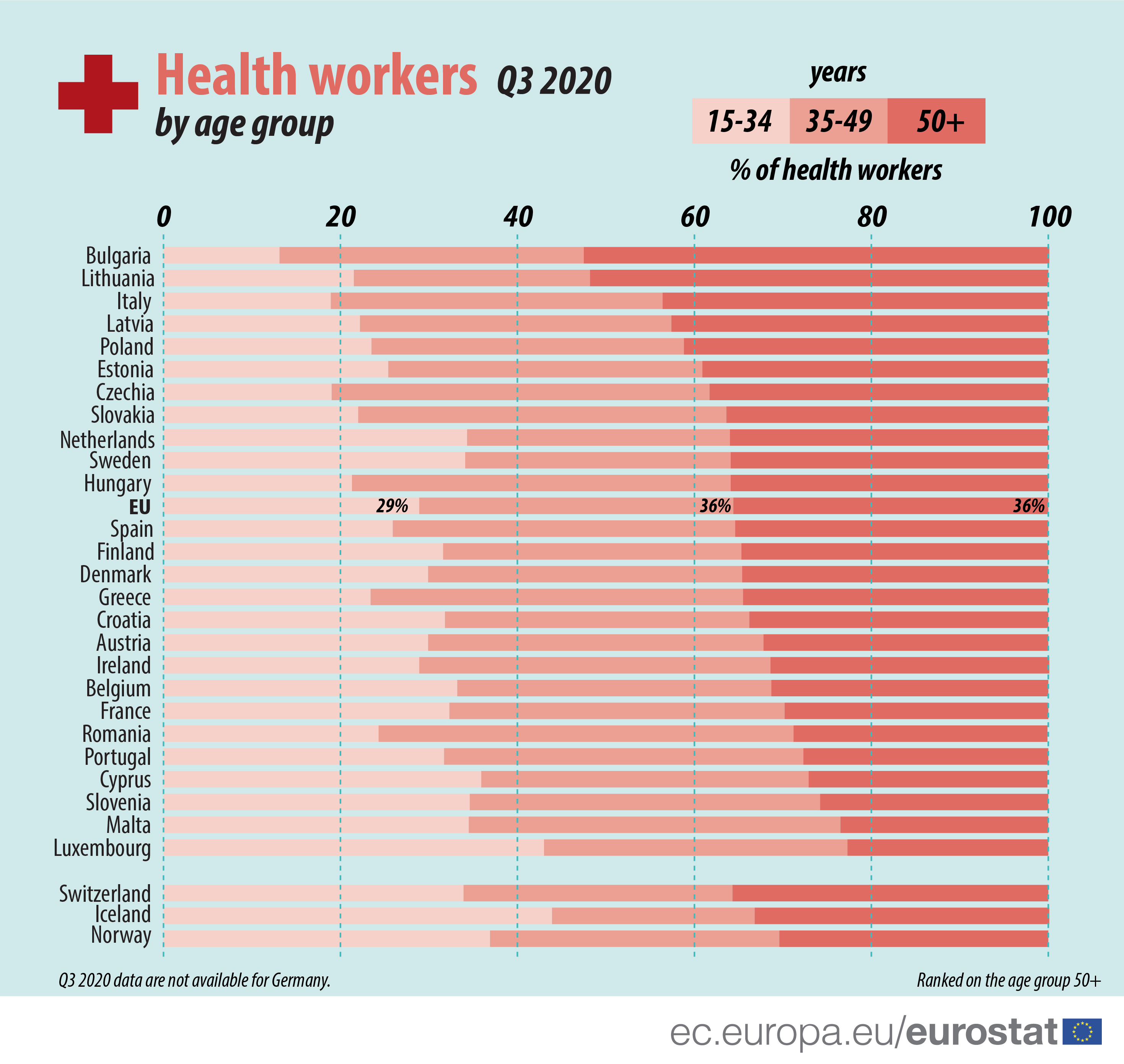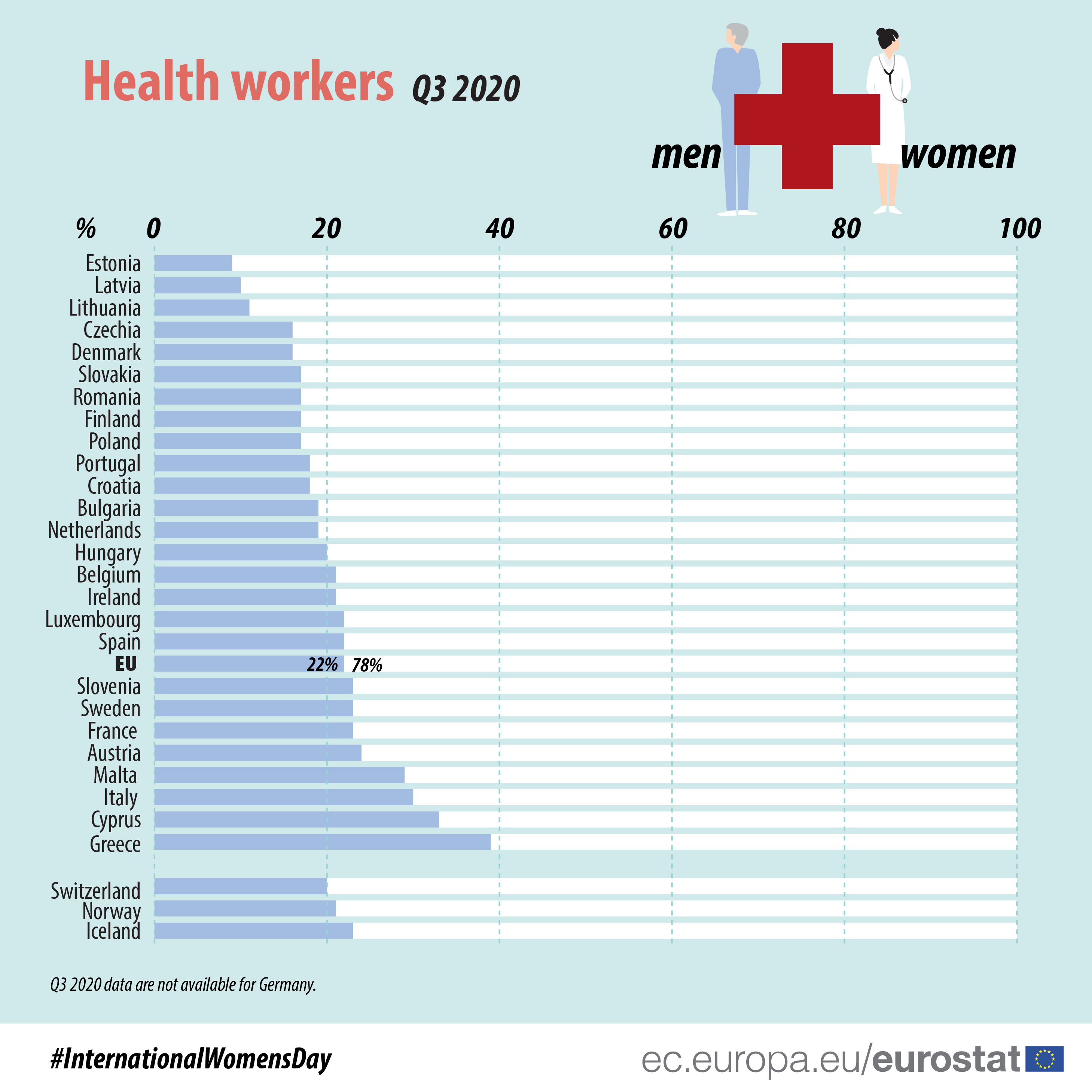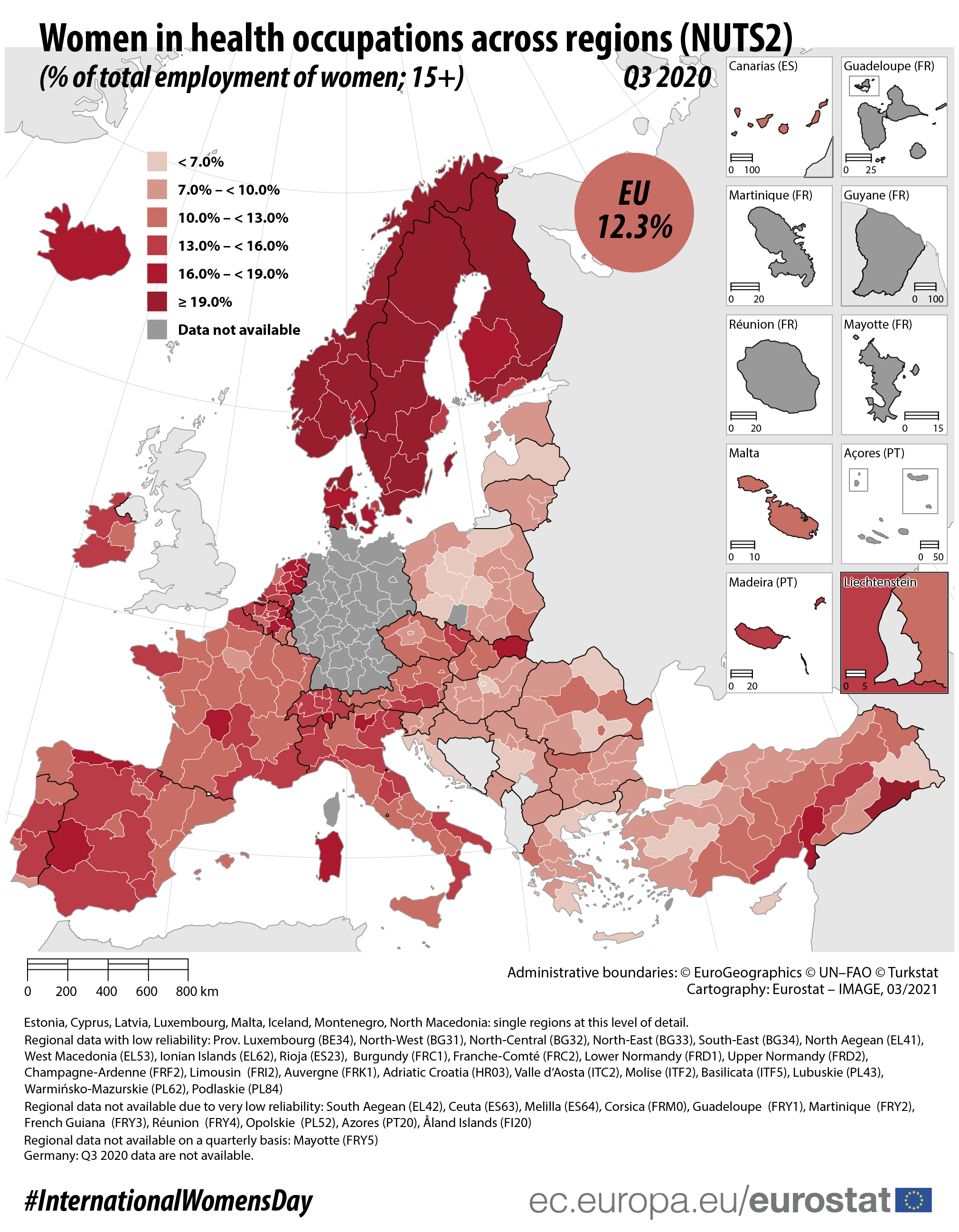In the third quarter of 2020, 14.3 million people aged 15 and over were employed in health occupations in the EU, representing over 7% of employed people and almost 4% of people aged 15 and over.
These health jobs include medical doctors (1.8 million), nurses, midwives and their associates (4.4 million, out of which 2.7 million are associates), personal care workers (3.9 million), other health professionals and associates (4.1 million). Over the past year, these workers were at the forefront of the COVID-19 response.
Looking at their age profile, health workers aged 35-49 and those 50 years or over were similarly represented, with both age groups accounting for over a third of people (36%) in these occupations.
In a majority (16 of 26) of the EU Member States with available data, the largest share of health workers were aged 35-49, with the highest share reported in Romania (47%), followed by Hungary and Czechia (both 43%).
In 9 EU Member States, people aged over 50 accounted for the largest share of health workers, whilst in only one EU Member State did health workers aged 15-34 represent the largest share: Luxembourg (43%).
Spotlight on women at the frontline of COVID-19
In Q3 2020, the vast majority of the health workers in the EU were women (78%). Across EU Member States, this share ranges from 61% in Greece to over 90% in Estonia and Latvia.
For women in the EU, health occupations accounted for 12% of their total employment in Q3 2020, however this share varied across countries as well as regions.
At regional level, highest shares were generally recorded in northern regions of the EU:
- seven non-capital regions of Sweden: Upper Norrland (28% of total employment of women), Central Norrland (27%), Småland and islands and North-Central Sweden (both 25%), East-Central Sweden and West Sweden (both 21%), South Sweden (19%);
- three regions in Denmark: North Jutland (22%), South Denmark (20%), Zealand (19%);
- two regions in Finland: North and East Finland (24%) and South Finland (20%); as well as
- Zeeland (20%) in the Netherlands.
This article is part of a series of articles published in the run-up to the International Women's Day.
For more information:
- Health occupations in this article, as defined under ISCO-08 classification, include: 221 - Medical doctors, 222 - Nursing and midwifery professionals, 226 - Other health professionals, 322 - Nursing and midwifery associate professionals, 325 - Other health associate professionals and 532 - Personal care workers in health services.
- The figures were collected through the EU Labour Force Survey and can be accessed in this
special data extraction.
- In this article, the regional data are presented at NUTS 2 level. The names of the regions are in English.
- Estonia, Cyprus, Latvia, Luxembourg, Malta, Iceland, Montenegro, North Macedonia: single regions at this level of detail.
- Regional data with low reliability: Prov. Luxembourg (BE34), North-West (BG31), North-Central (BG32), North-East (BG33), South-East (BG34), North Aegean (EL41), West Macedonia (EL53), Ionian Islands (EL62), Rioja (ES23), Burgundy (FRC1), Franche-Comté (FRC2), Lower Normandy (FRD1), Upper Normandy (FRD2), Champagne-Ardenne (FRF2), Limousin (FRI2), Auvergne (FRK1), Adriatic Croatia (HR03), Valle d’Aosta (ITC2), Molise (ITF2), Basilicata (ITF5), Lubuskie (PL43), Warmińsko-Mazurskie (PL62), Podlaskie (PL84)
- Regional data not available due to very low reliability: South Aegean (EL42), Ceuta (ES63), Melilla (ES64), Corsica (FRM0), Guadeloupe (FRY1), Martinique (FRY2), French Guiana (FRY3), Réunion (FRY4), Opolskie (PL52), Azores (PT20), Åland Islands (FI20)
- Regional data not available on a quarterly basis: Mayotte (FRY5)
- Germany: Q1-Q3 2020 data are not available. Due to technical issues with the introduction of the new German system of integrated household surveys, including the Labour Force Survey (LFS), the achieved sample for Q1-Q3 2020 is not large enough to allow for dissemination of the German figures. However, Q3 2020 values were included in the computations of the EU aggregate used in this article. For more information: see here.
To contact us, please visit our User Support page.
For press queries, please contact our Media Support.





